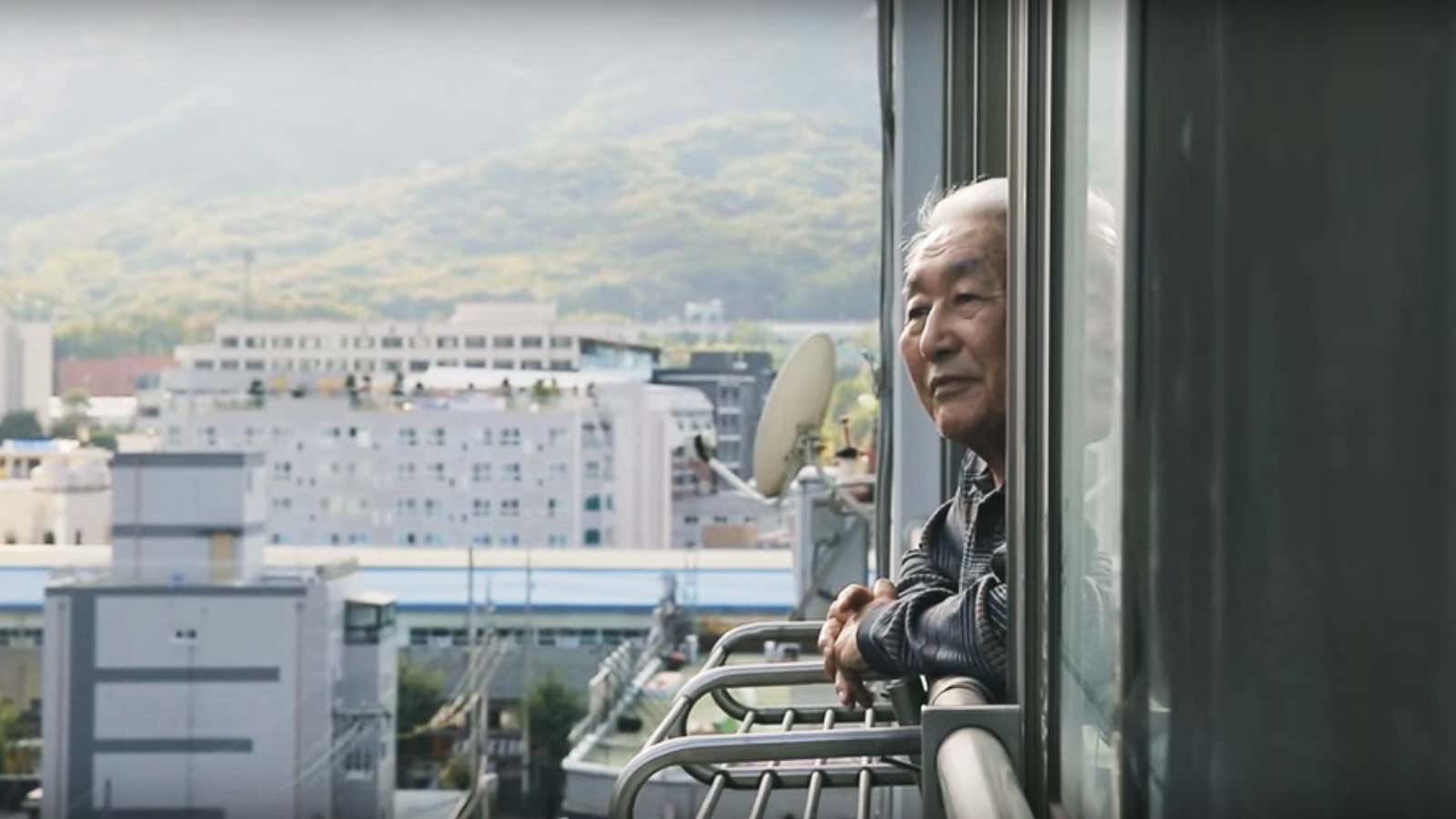Kim Gu-Hyeon, 88, had his last glimpse of his Korean hometown in the spring of 1947.
It was a “cozy little village surrounded by mountains,” he recalls fondly. He hasn’t been back since he was a much younger man. Kim is one of 66,000 North Koreans currently living in South Korea—displaced, to this day, by the tumultuous Korean War that cut millions of people off from their families and communities.
This year, he was finally able to journey “home.”
The trip wasn’t physical, because Korea is still a strictly divided nation. But it was the next best thing: Using advanced mapping technology and two months’ worth of interviews with Kim about his specific, detailed recollections of the place, Hyundai Motor Group, South Korea’s largest automobile retailer, set up a virtual reality simulation of Kim’s hometown. On Nov. 5, the company—carrying out a reunification campaign first imagined by Hyundai founder Chung Ju-Yung, who died in 2001—simulated a three-dimensional “drive” through the town with Kim in the passenger seat.
In the video, as he travels through a place he hasn’t seen in 68 years, Kim points delightedly to landmarks he remembers from his childhood: a bridge that sits atop a gushing stream, a peaceful meadow area cradled by mountains.
“Swallows fly back north after winter. Salmon swim back to fresh water from the ocean. All animals ultimately find their way back home,” he says.
The virtual town is full of detailed touches, from advertisements to wildflowers to traffic cops on the streets. According to company representatives, Hyundai’s project, which is titled “Going Home,” represents its founder Chung’s desire to give new hope to the displaced individuals who have been affected by Korea’s political strife. Chung himself was born in what is now North Korea.
Poignantly, the journey in the video ends at Kim’s childhood home—which no longer exists, but was recreated by developers who listened to Kim describe it. The scene is quiet, subdued, with the static image of the house looming large on the screen.
Kim, visibly shaken at the sight, steps out of the stationary car and reaches out to touch the wall where the image is projected. ”Mother, it’s me. Gu-Hyeon has come home,” he says. “Mother—why do you not answer?”
Then, transported to the site of his parents’ graves, Kim takes a solemn bow, pressing his hands and head all the way to the ground. ”Father,” he says. “Forgive me for taking so long to come back home.”




